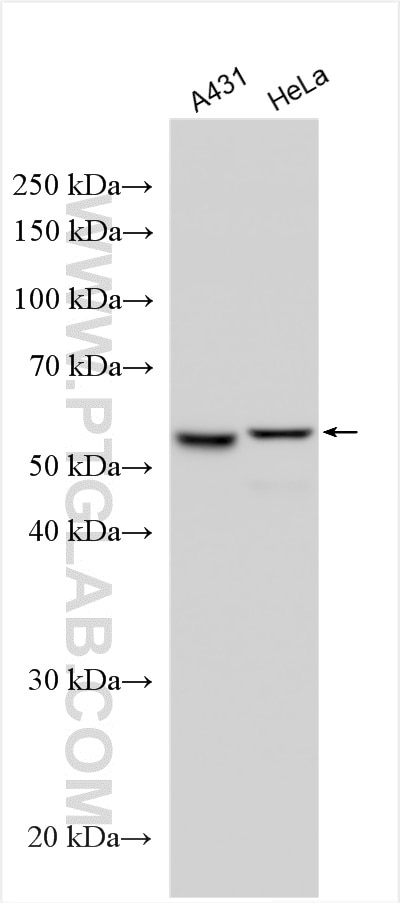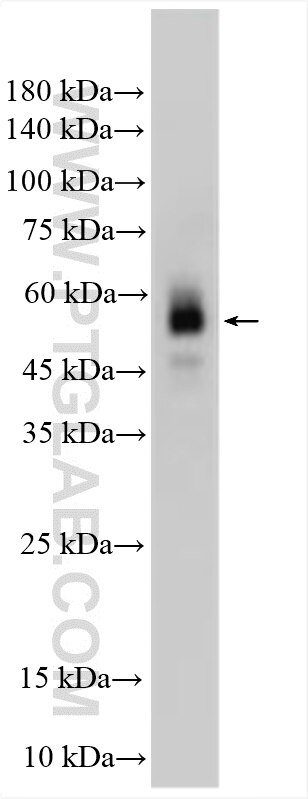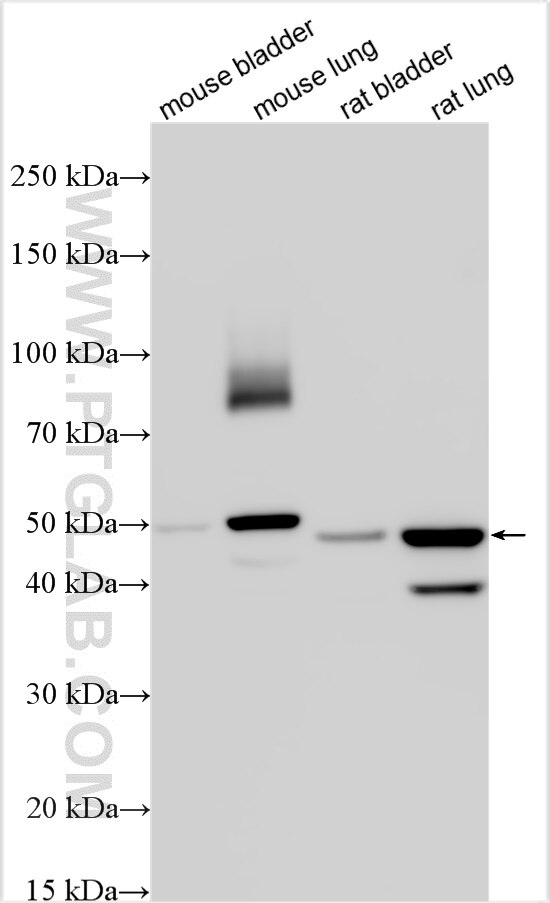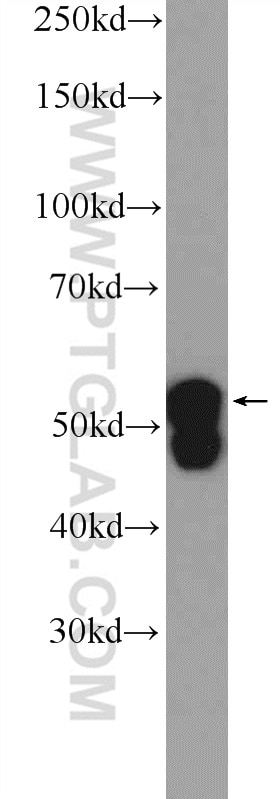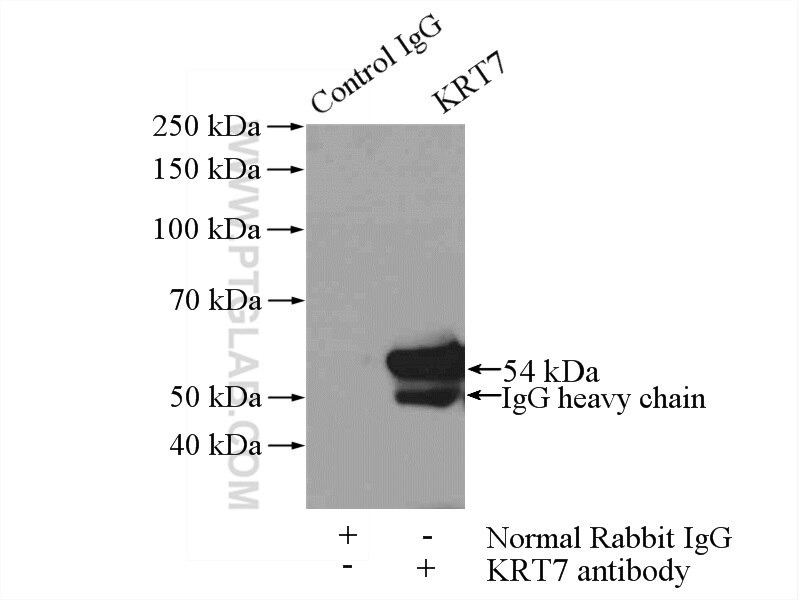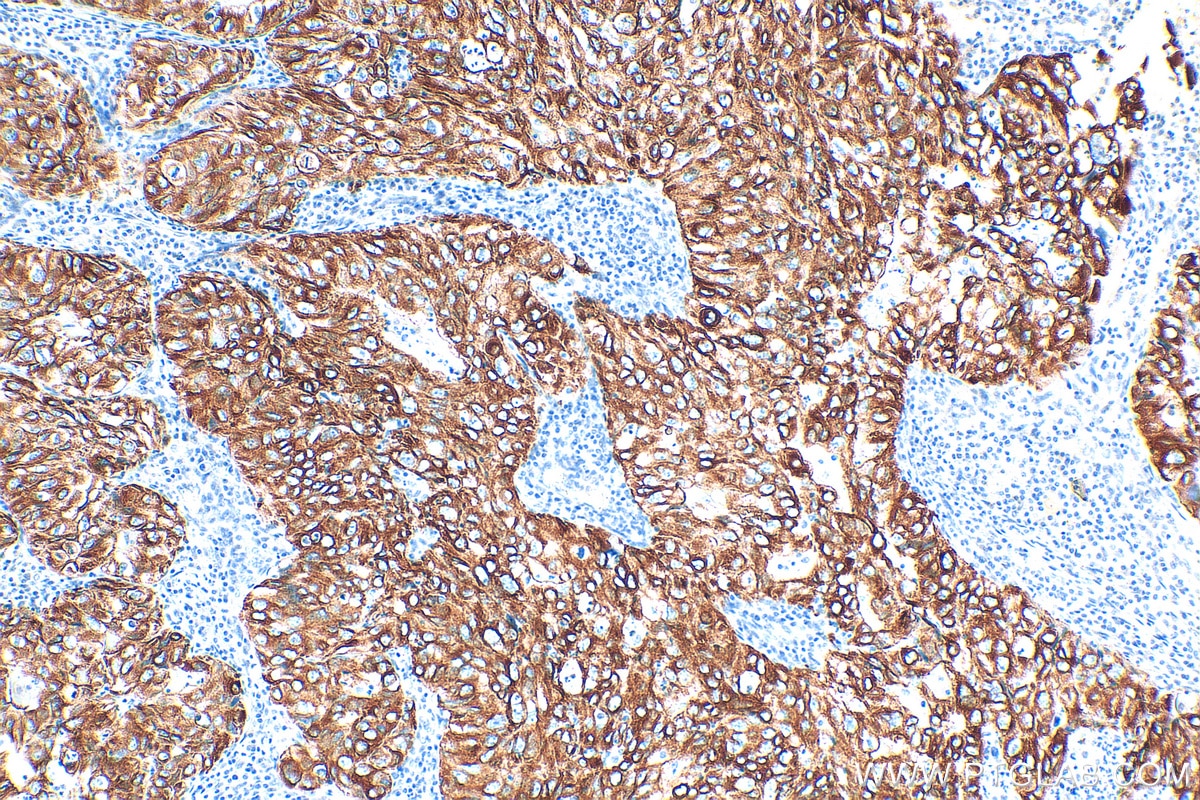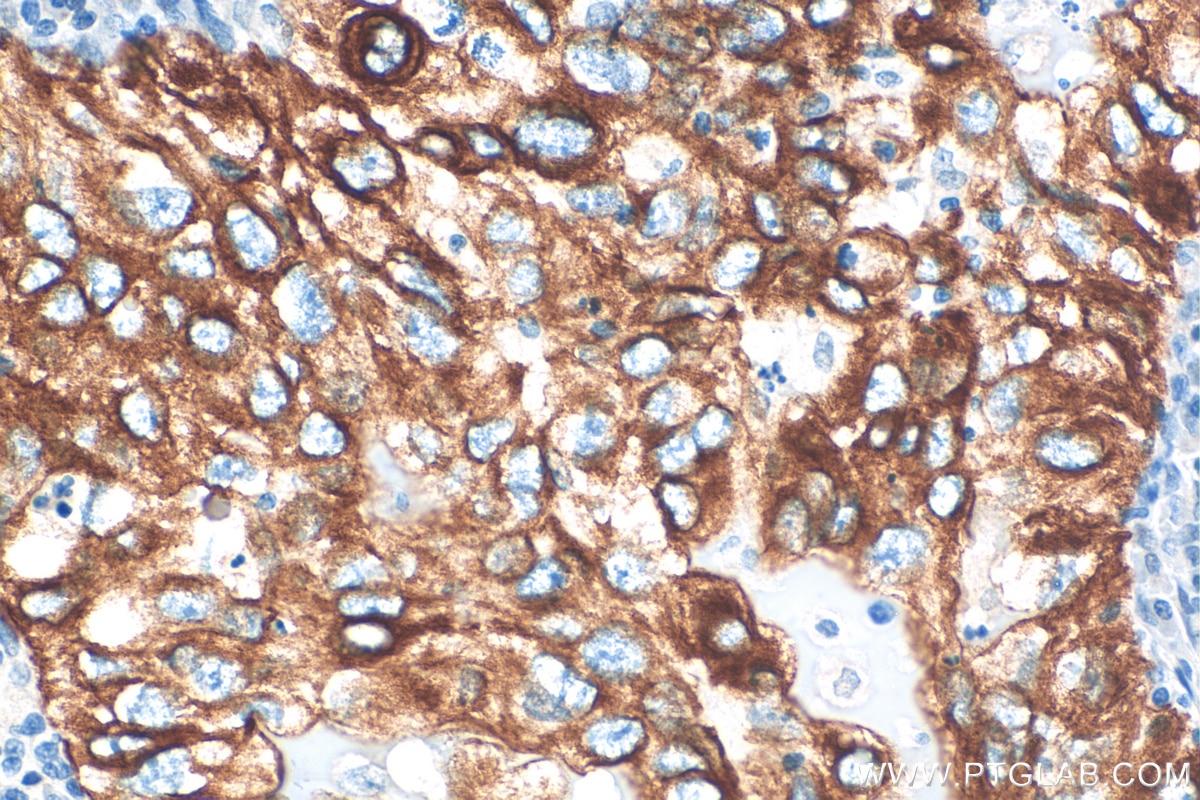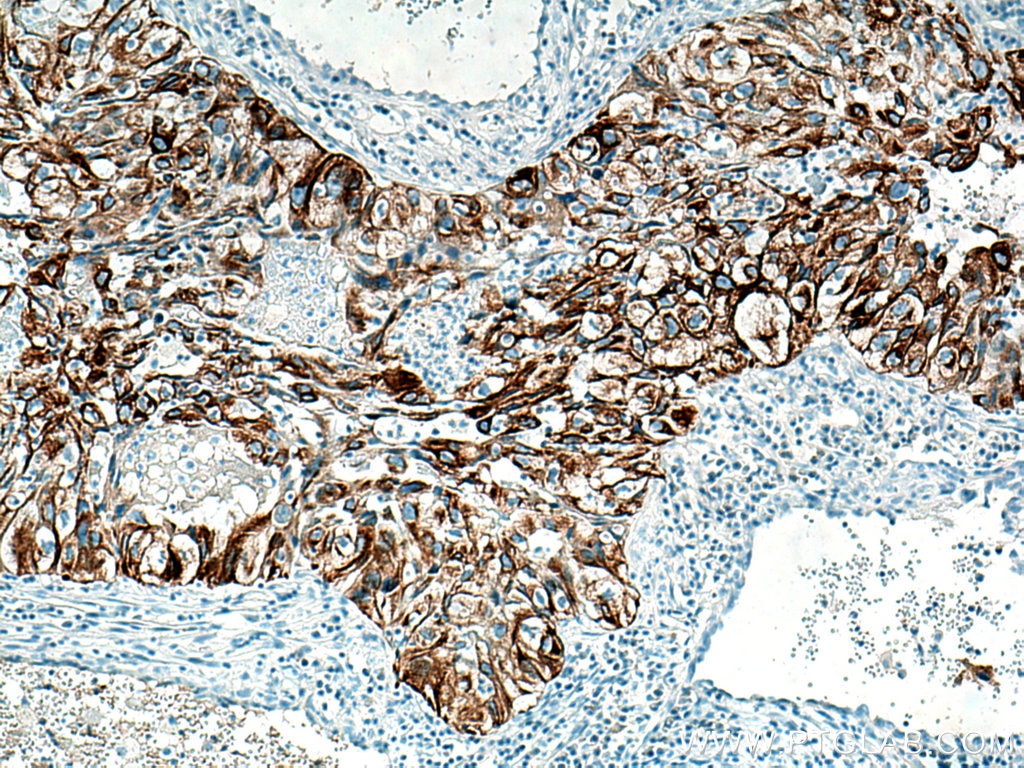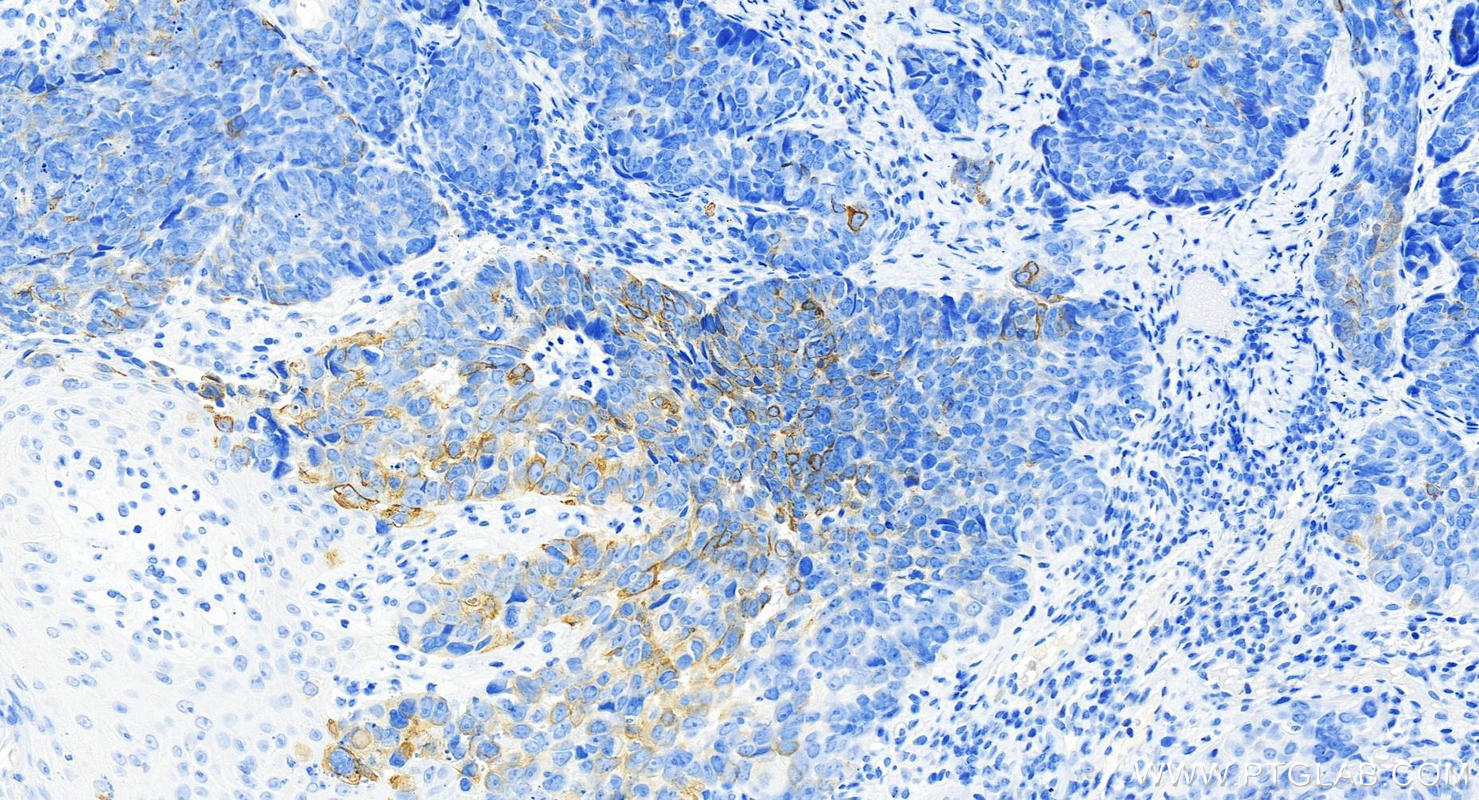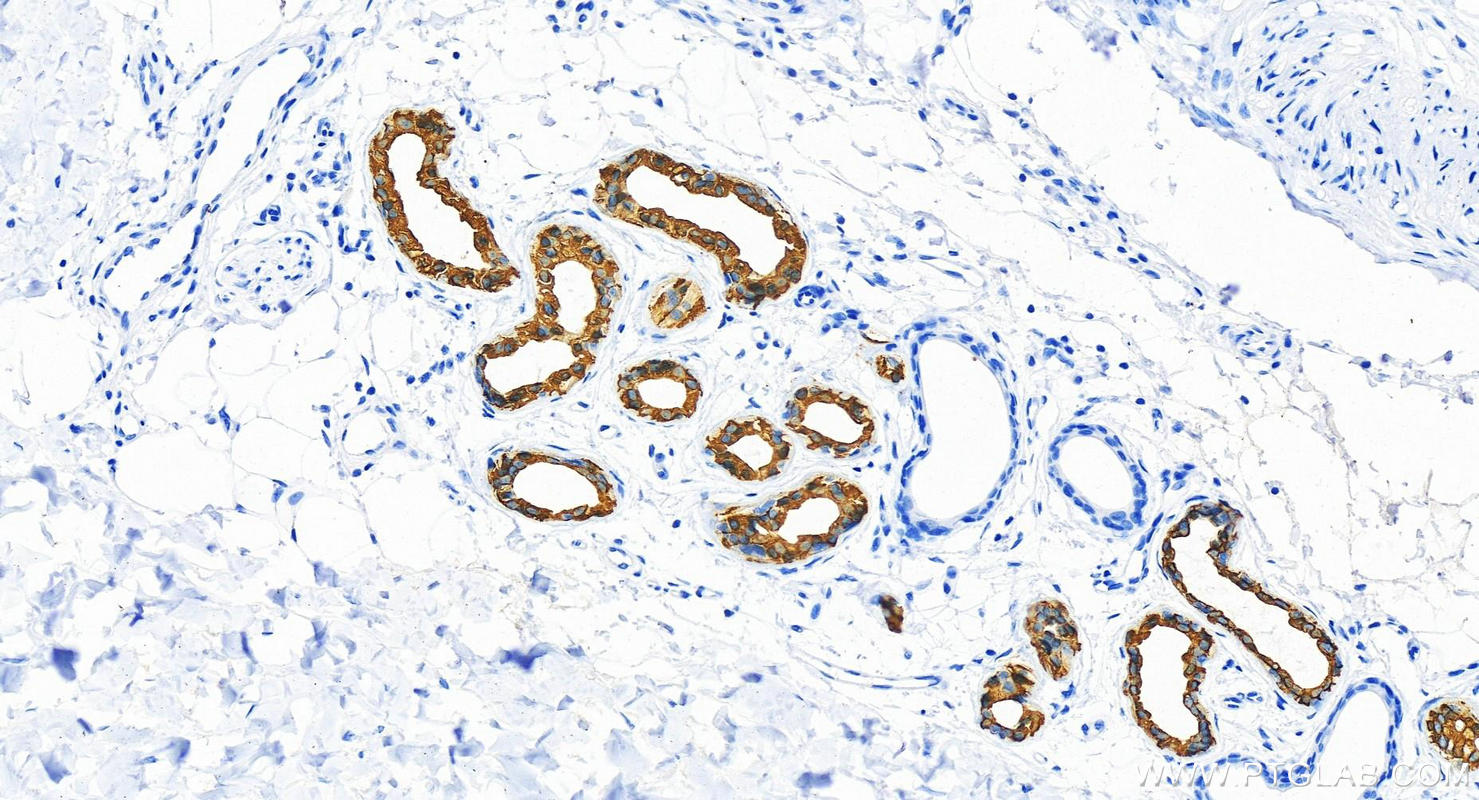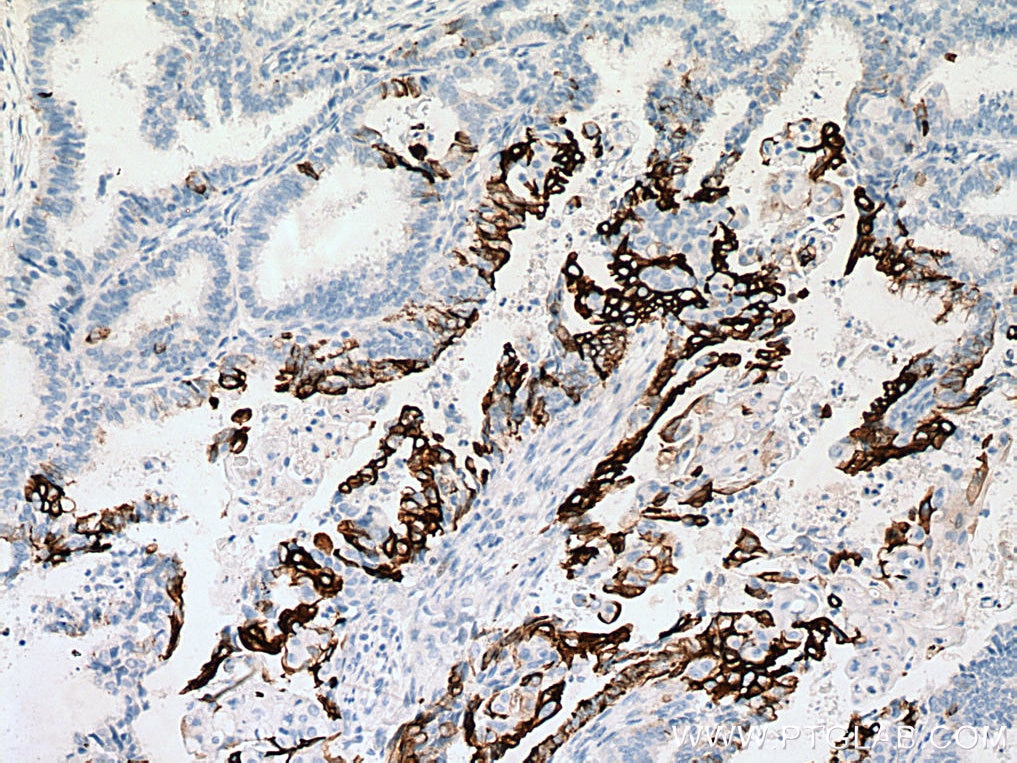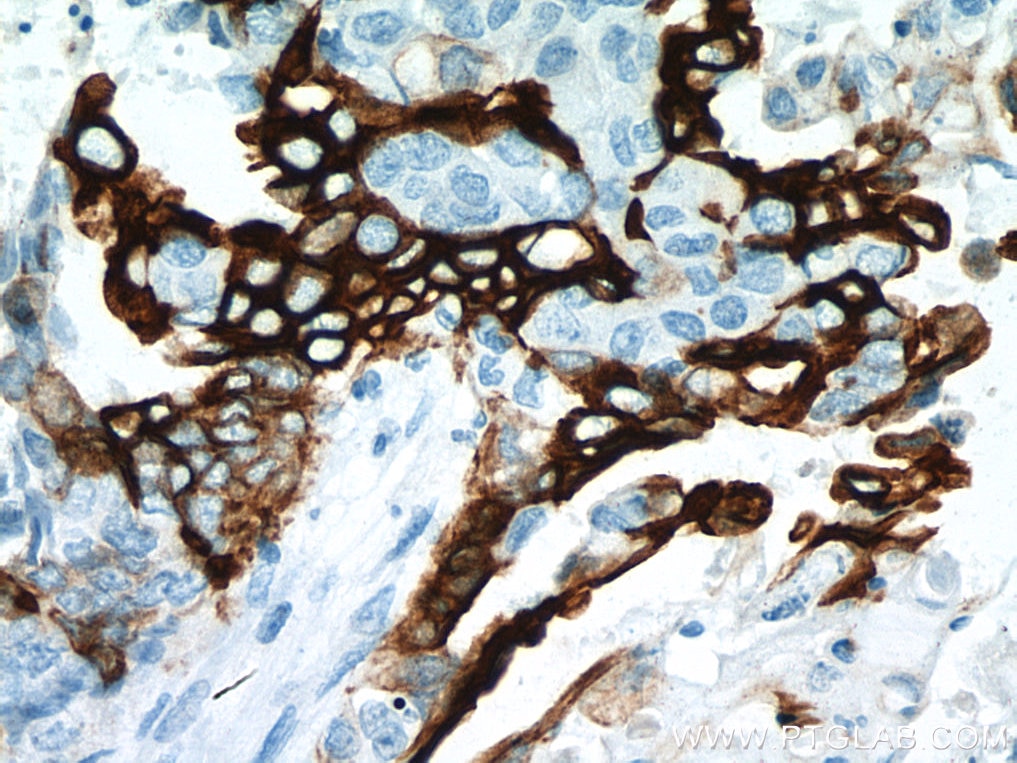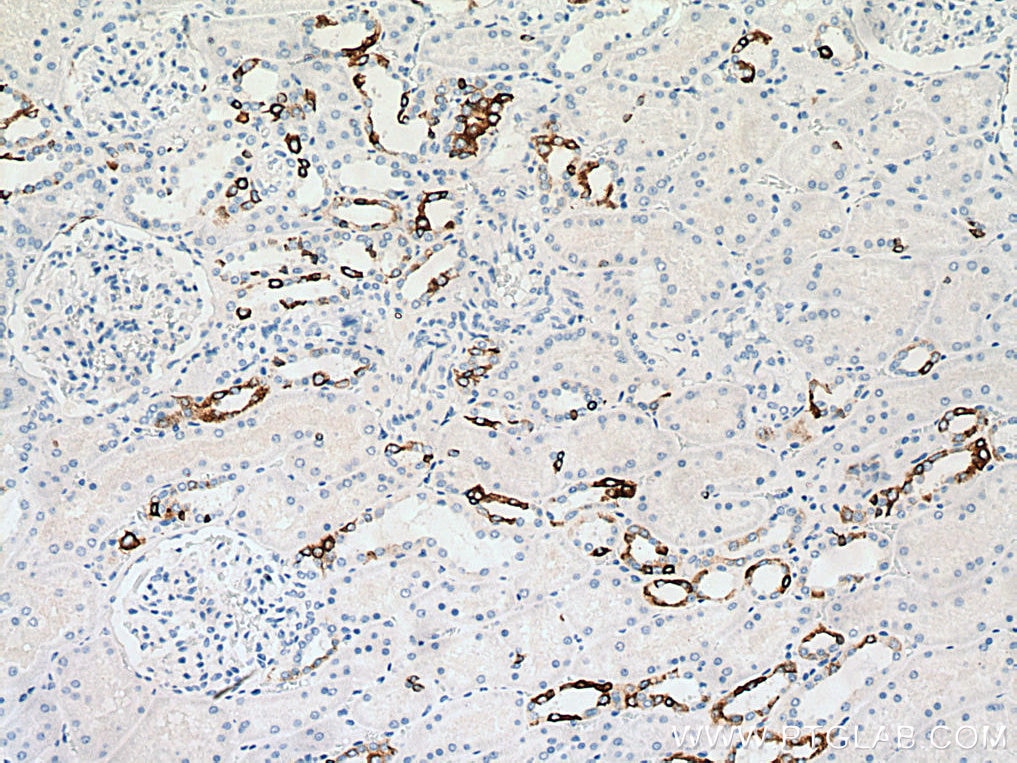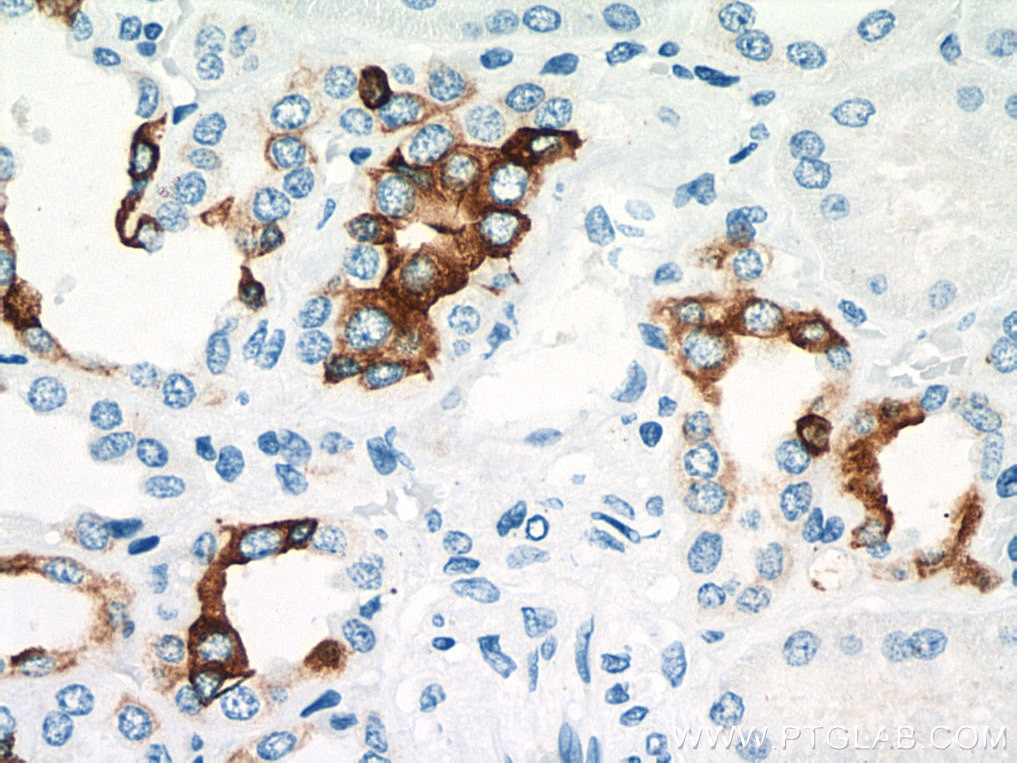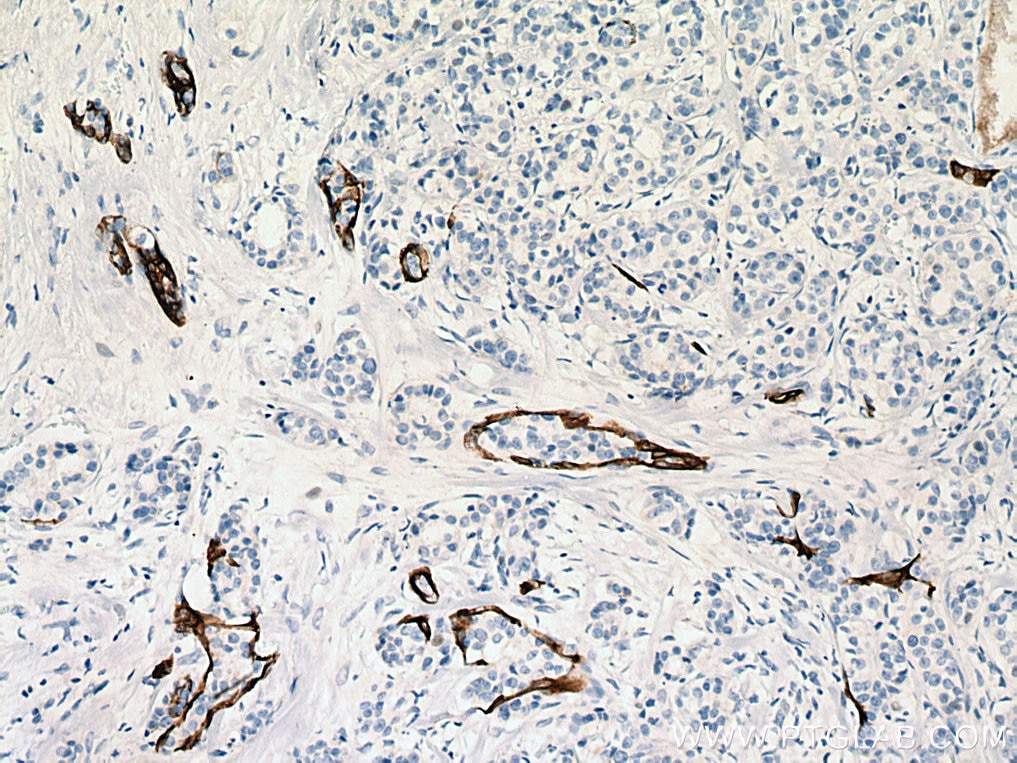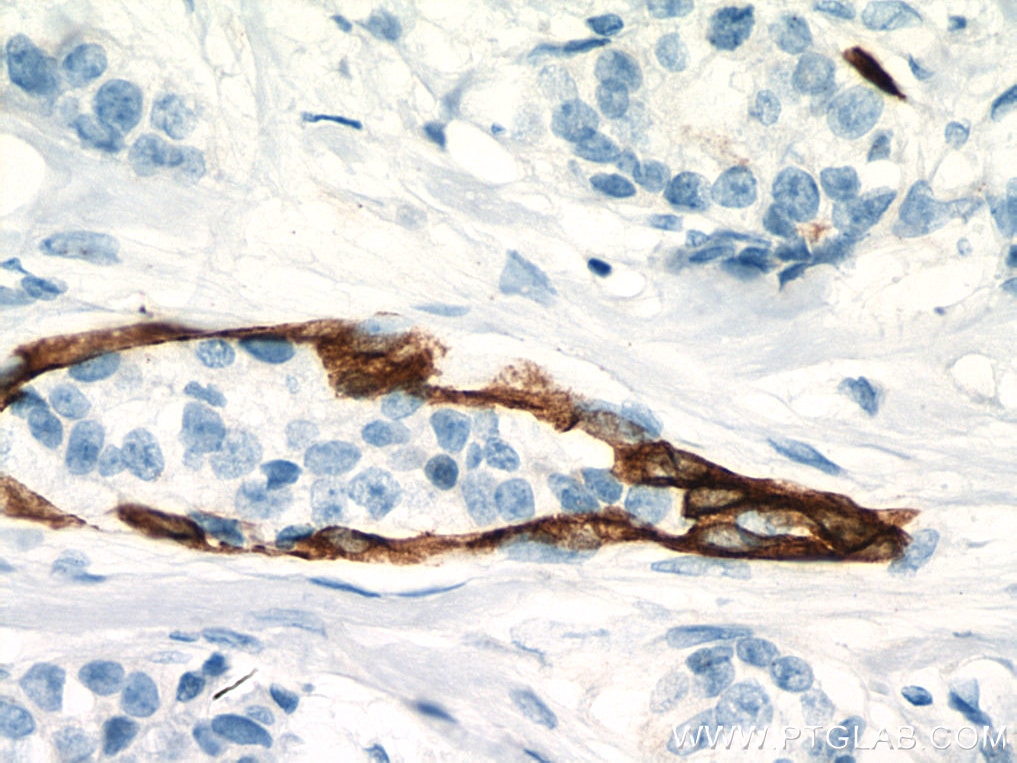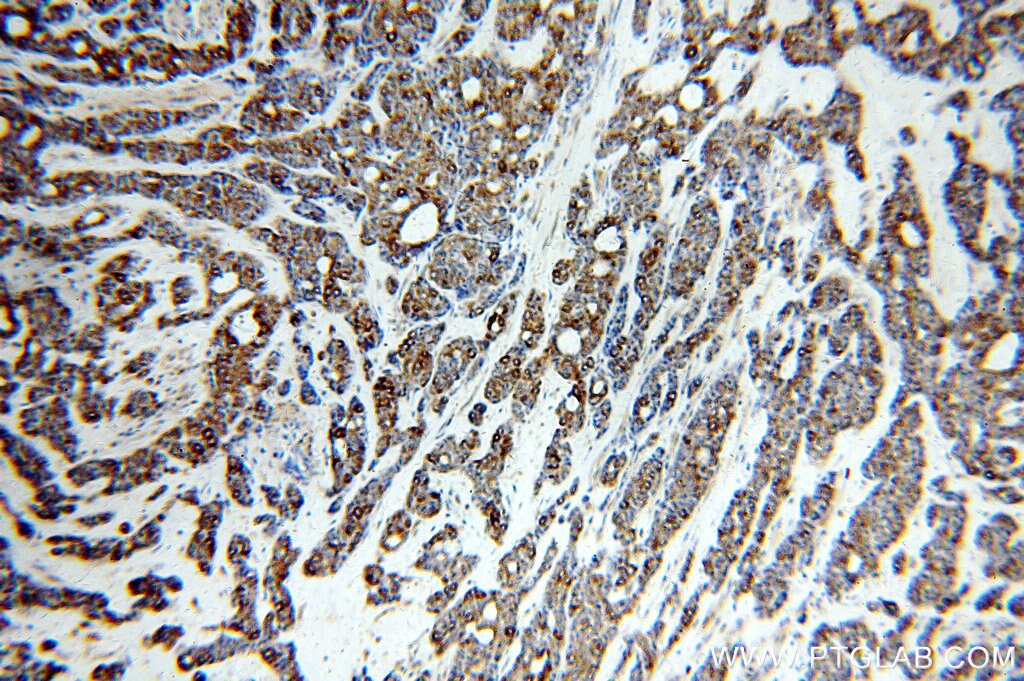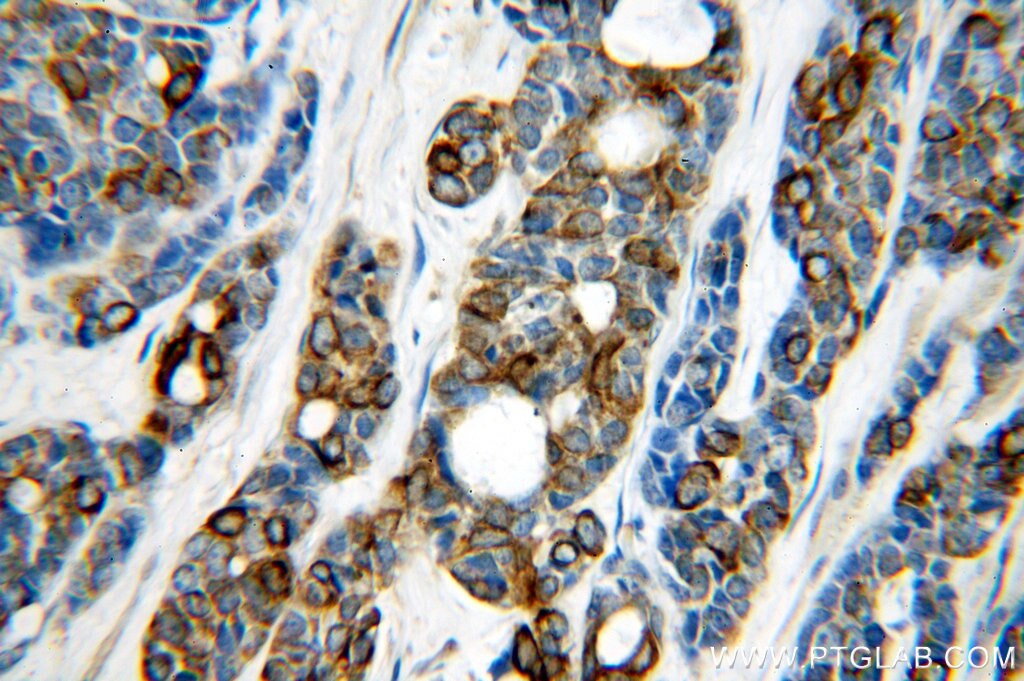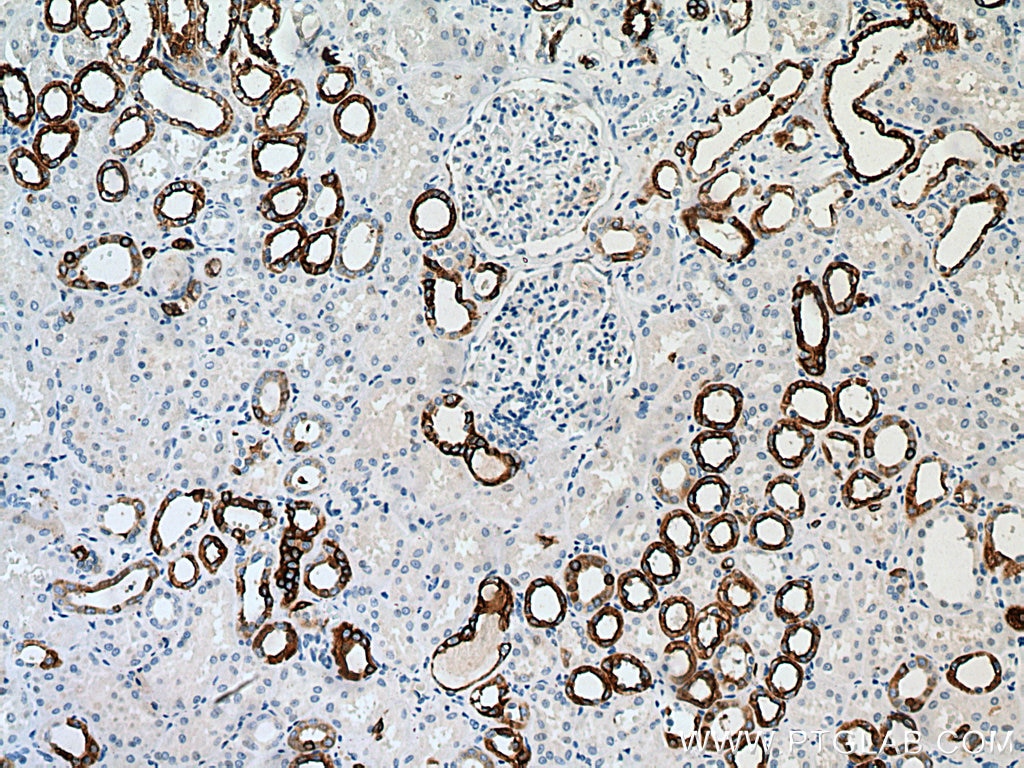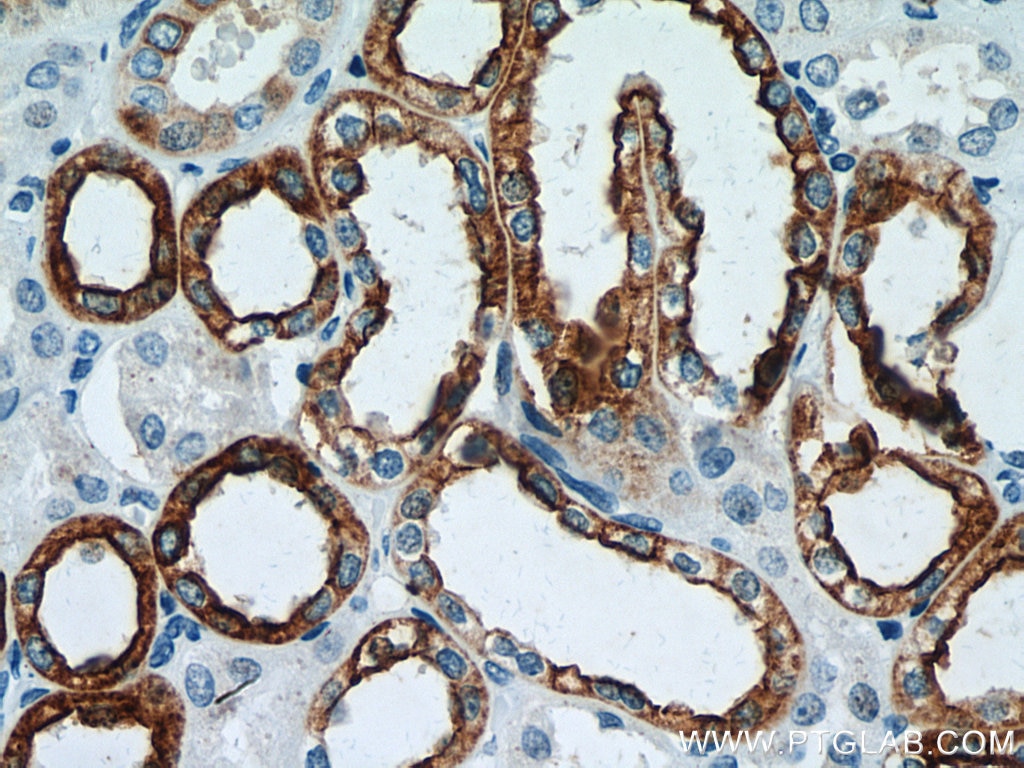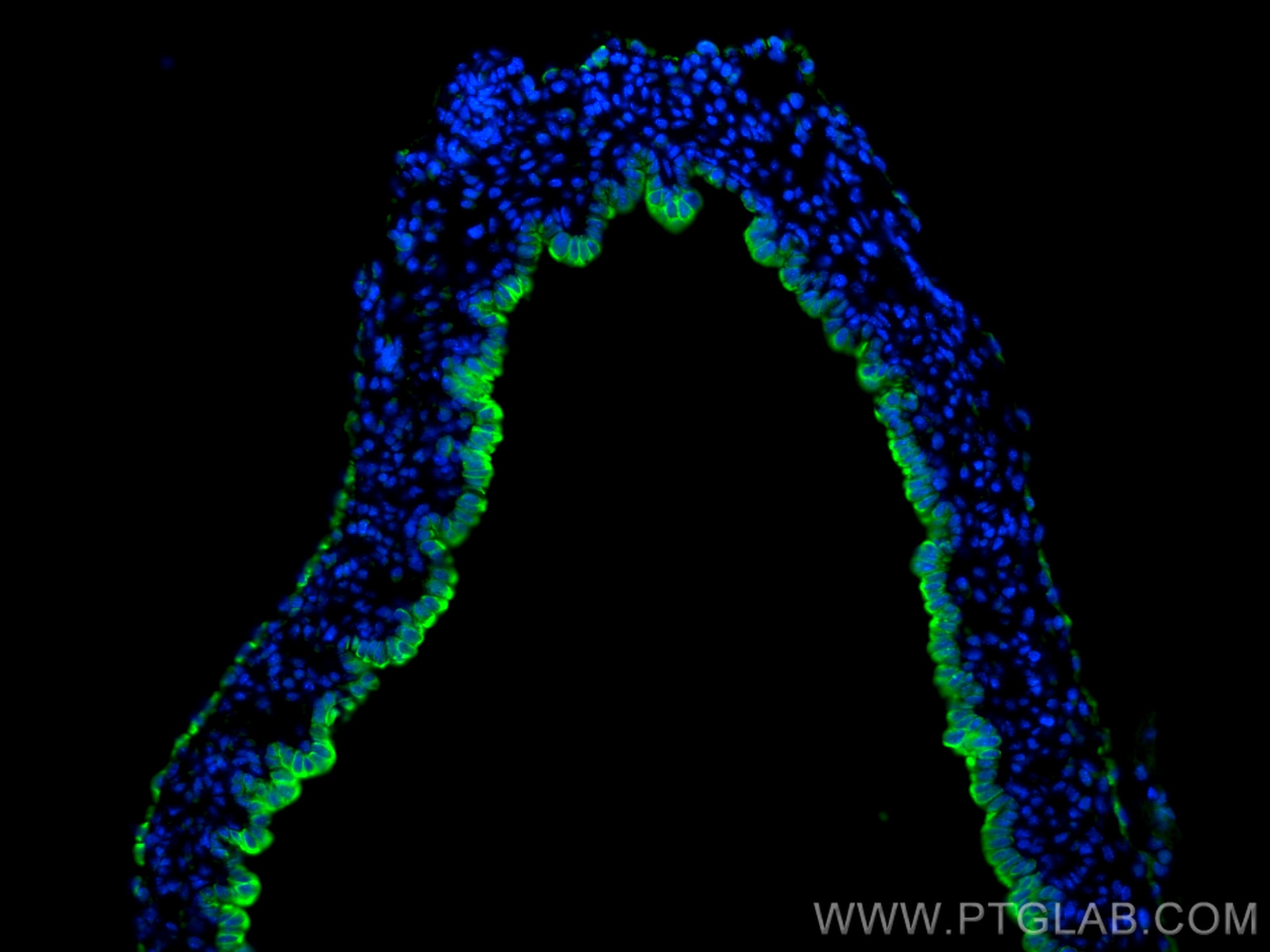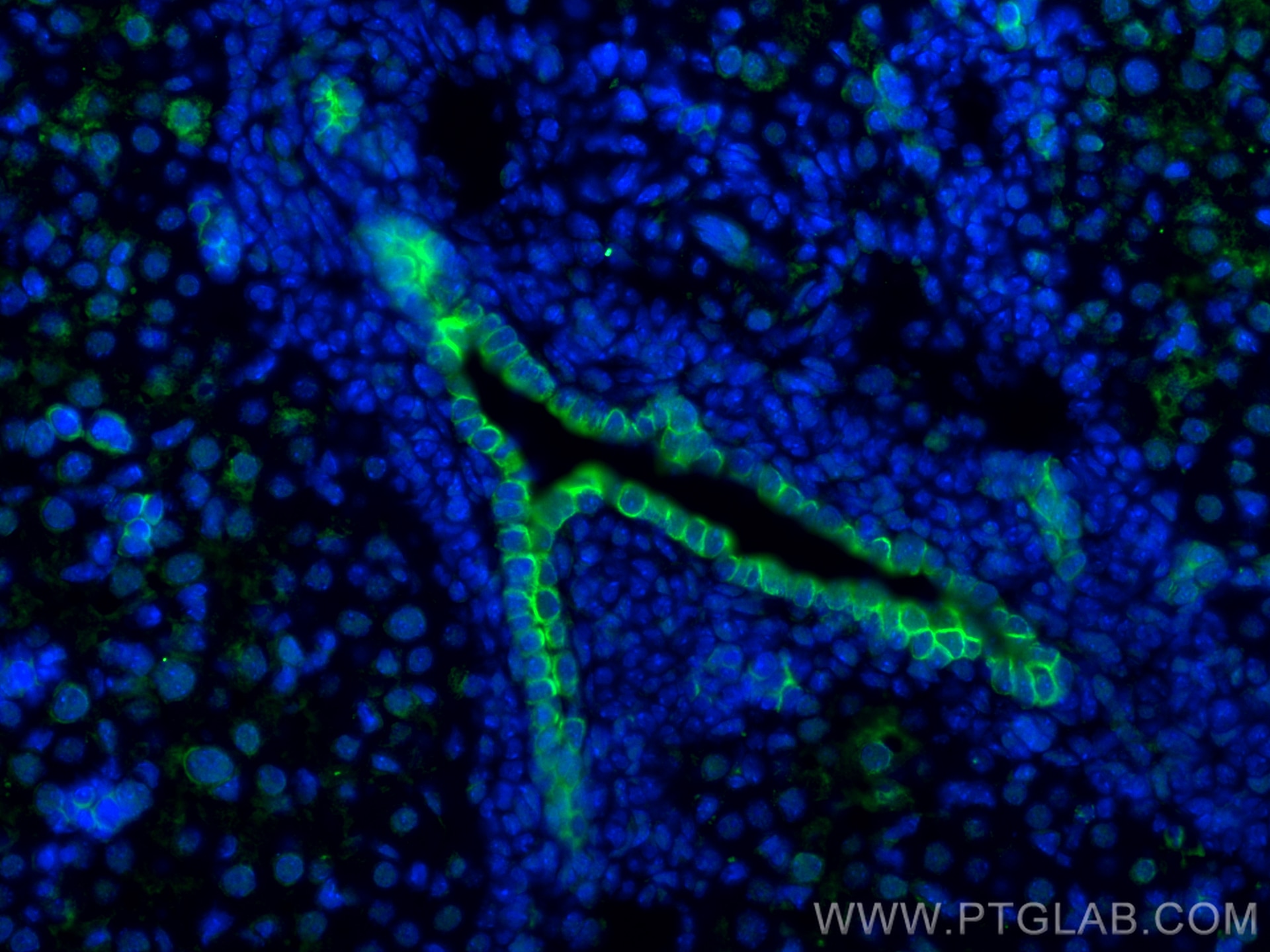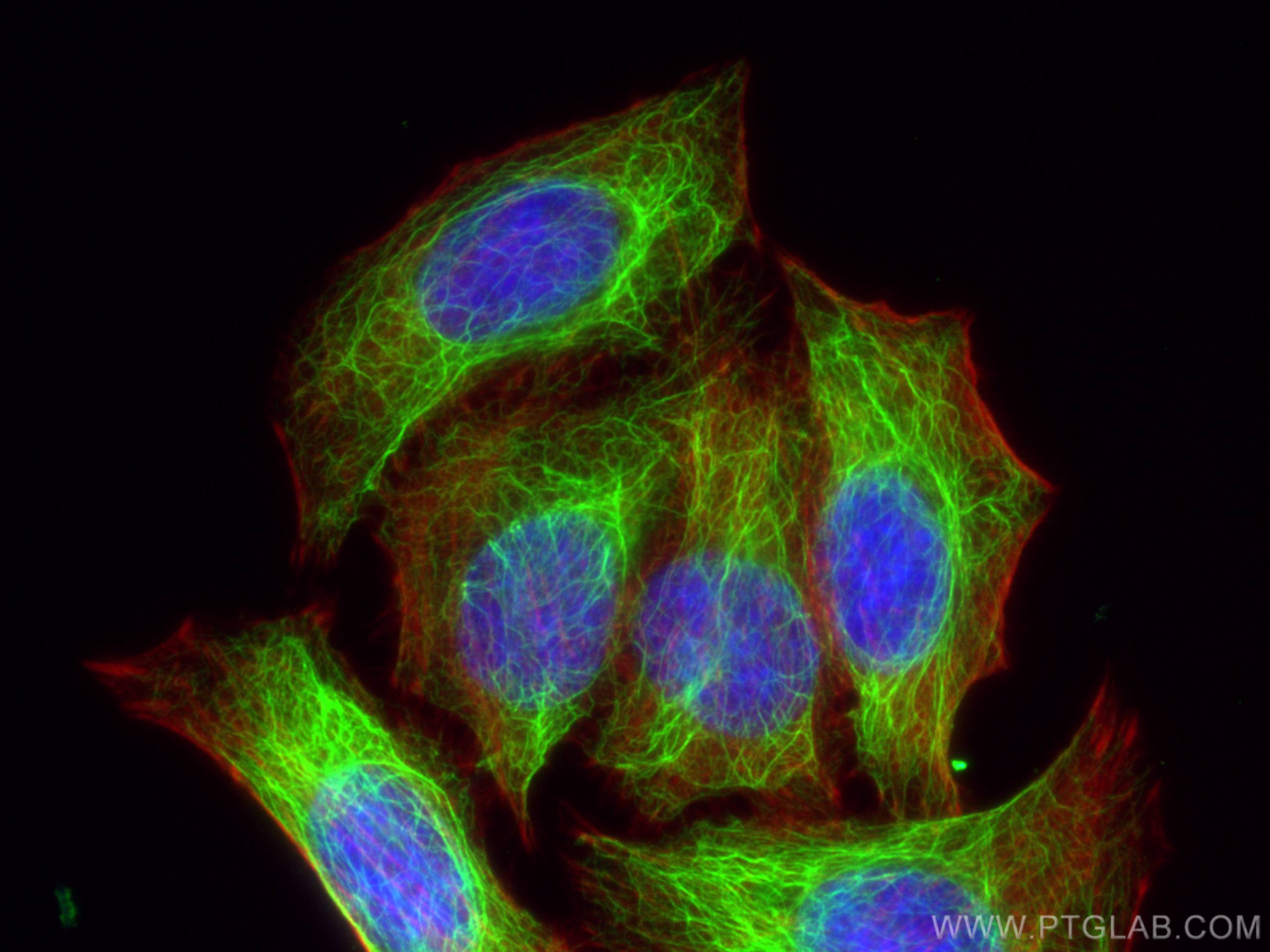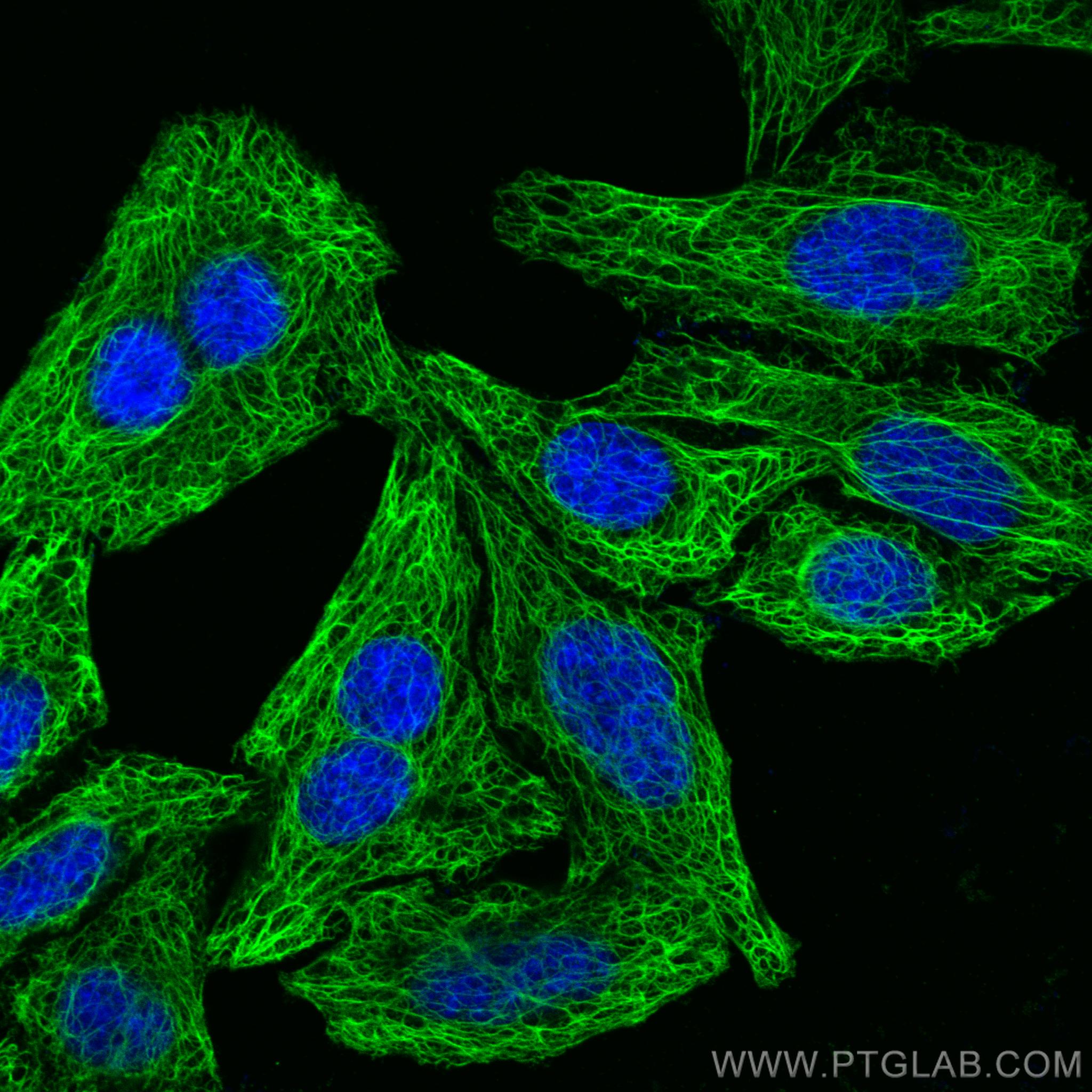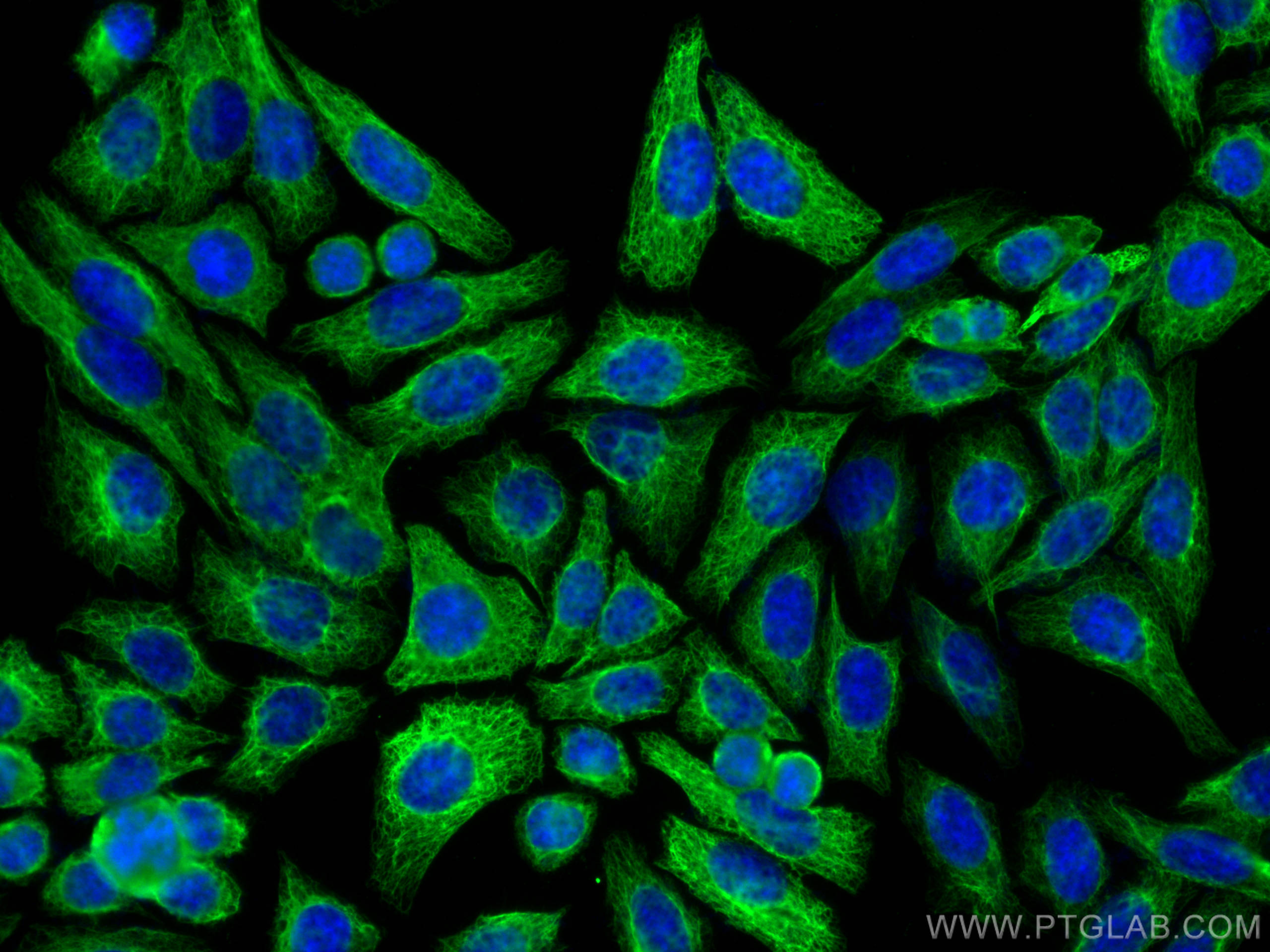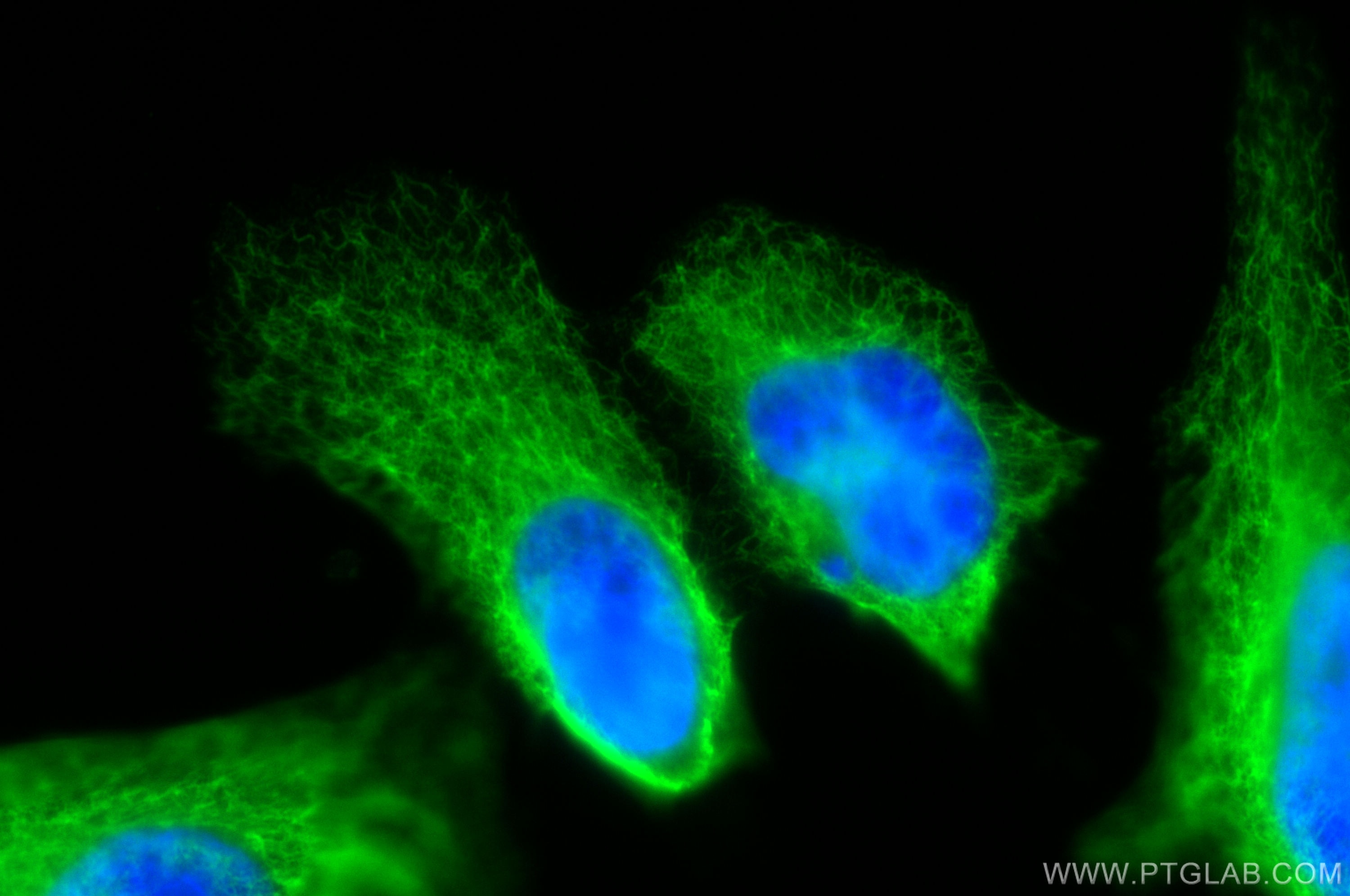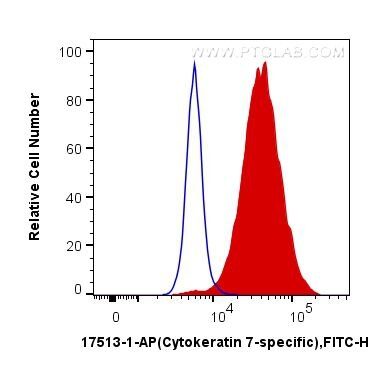- Phare
- Validé par KD/KO
Anticorps Polyclonal de lapin anti-Cytokeratin 7-specific
Cytokeratin 7-specific Polyclonal Antibody for WB, IHC, IF/ICC, IF-P, FC (Intra), IP, ELISA
Hôte / Isotype
Lapin / IgG
Réactivité testée
Humain, rat, souris et plus (1)
Applications
WB, IHC, IF/ICC, IF-P, FC (Intra), IP, ELISA
Conjugaison
Non conjugué
N° de cat : 17513-1-AP
Synonymes
Galerie de données de validation
Applications testées
| Résultats positifs en WB | cellules A431, cellules HeLa, cellules T-47D, tissu pulmonaire de rat, tissu pulmonaire de souris, tissu vésical de rat, tissu vésical de souris |
| Résultats positifs en IP | cellules HepG2 |
| Résultats positifs en IHC | tissu de cancer du poumon humain, tissu de cancer du col de l'utérus humain, tissu de cancer du sein humain, tissu de tumeur ovarienne humain, tissu rénal humain il est suggéré de démasquer l'antigène avec un tampon de TE buffer pH 9.0; (*) À défaut, 'le démasquage de l'antigène peut être 'effectué avec un tampon citrate pH 6,0. |
| Résultats positifs en IF-P | tissu hépatique de souris, |
| Résultats positifs en IF/ICC | cellules HeLa, cellules HepG2 |
| Résultats positifs en FC (Intra) | cellules HeLa |
Dilution recommandée
| Application | Dilution |
|---|---|
| Western Blot (WB) | WB : 1:10000-1:50000 |
| Immunoprécipitation (IP) | IP : 0.5-4.0 ug for 1.0-3.0 mg of total protein lysate |
| Immunohistochimie (IHC) | IHC : 1:1000-1:4000 |
| Immunofluorescence (IF)-P | IF-P : 1:200-1:800 |
| Immunofluorescence (IF)/ICC | IF/ICC : 1:50-1:500 |
| Flow Cytometry (FC) (INTRA) | FC (INTRA) : 0.20 ug per 10^6 cells in a 100 µl suspension |
| It is recommended that this reagent should be titrated in each testing system to obtain optimal results. | |
| Sample-dependent, check data in validation data gallery | |
Applications publiées
| KD/KO | See 1 publications below |
| WB | See 6 publications below |
| IHC | See 28 publications below |
| IF | See 28 publications below |
Informations sur le produit
17513-1-AP cible Cytokeratin 7-specific dans les applications de WB, IHC, IF/ICC, IF-P, FC (Intra), IP, ELISA et montre une réactivité avec des échantillons Humain, rat, souris
| Réactivité | Humain, rat, souris |
| Réactivité citée | rat, bovin, Humain, souris |
| Hôte / Isotype | Lapin / IgG |
| Clonalité | Polyclonal |
| Type | Anticorps |
| Immunogène | Peptide |
| Nom complet | keratin 7 |
| Masse moléculaire calculée | 51 kDa |
| Poids moléculaire observé | 51 kDa |
| Numéro d’acquisition GenBank | NM_005556 |
| Symbole du gène | Cytokeratin 7 |
| Identification du gène (NCBI) | 3855 |
| Conjugaison | Non conjugué |
| Forme | Liquide |
| Méthode de purification | Purification par affinité contre l'antigène |
| Tampon de stockage | PBS with 0.02% sodium azide and 50% glycerol |
| Conditions de stockage | Stocker à -20°C. Stable pendant un an après l'expédition. L'aliquotage n'est pas nécessaire pour le stockage à -20oC Les 20ul contiennent 0,1% de BSA. |
Informations générales
Keratins are a large family of proteins that form the intermediate filament cytoskeleton of epithelial cells, which are classified into two major sequence types. Type I keratins are a group of acidic intermediate filament proteins, including K9-K23, and the hair keratins Ha1-Ha8. Type II keratins are the basic or neutral courterparts to the acidic type I keratins, including K1-K8, and the hair keratins, Hb1-Hb6. KRT7 is a type II keratin. It is specifically expressed in the simple epithelia lining the cavities of the internal organs and in the gland ducts and blood vessels. This antibody is specifically against KRT7.
Protocole
| Product Specific Protocols | |
|---|---|
| WB protocol for Cytokeratin 7-specific antibody 17513-1-AP | Download protocol |
| IHC protocol for Cytokeratin 7-specific antibody 17513-1-AP | Download protocol |
| IF protocol for Cytokeratin 7-specific antibody 17513-1-AP | Download protocol |
| IP protocol for Cytokeratin 7-specific antibody 17513-1-AP | Download protocol |
| Standard Protocols | |
|---|---|
| Click here to view our Standard Protocols |
Publications
| Species | Application | Title |
|---|---|---|
Transl Res SERPINA5 may promote the development of preeclampsia by disruption of the uPA/uPAR pathway. | ||
Clin Cancer Res Integrative Genomic Analysis of Gemcitabine Resistance in Pancreatic Cancer by Patient-derived Xenograft Models. | ||
Angiogenesis A novel lymphatic pattern promotes metastasis of cervical cancer in a hypoxic tumour-associated macrophage-dependent manner. | ||
Proc Natl Acad Sci U S A Up-regulation of CD81 inhibits cytotrophoblast invasion and mediates maternal endothelial cell dysfunction in preeclampsia. | ||
Cell Death Dis METTL14 contributes to acute lung injury by stabilizing NLRP3 expression in an IGF2BP2-dependent manner | ||
Cell Prolif Insufficient GDF15 expression predisposes women to unexplained recurrent pregnancy loss by impairing extravillous trophoblast invasion |
